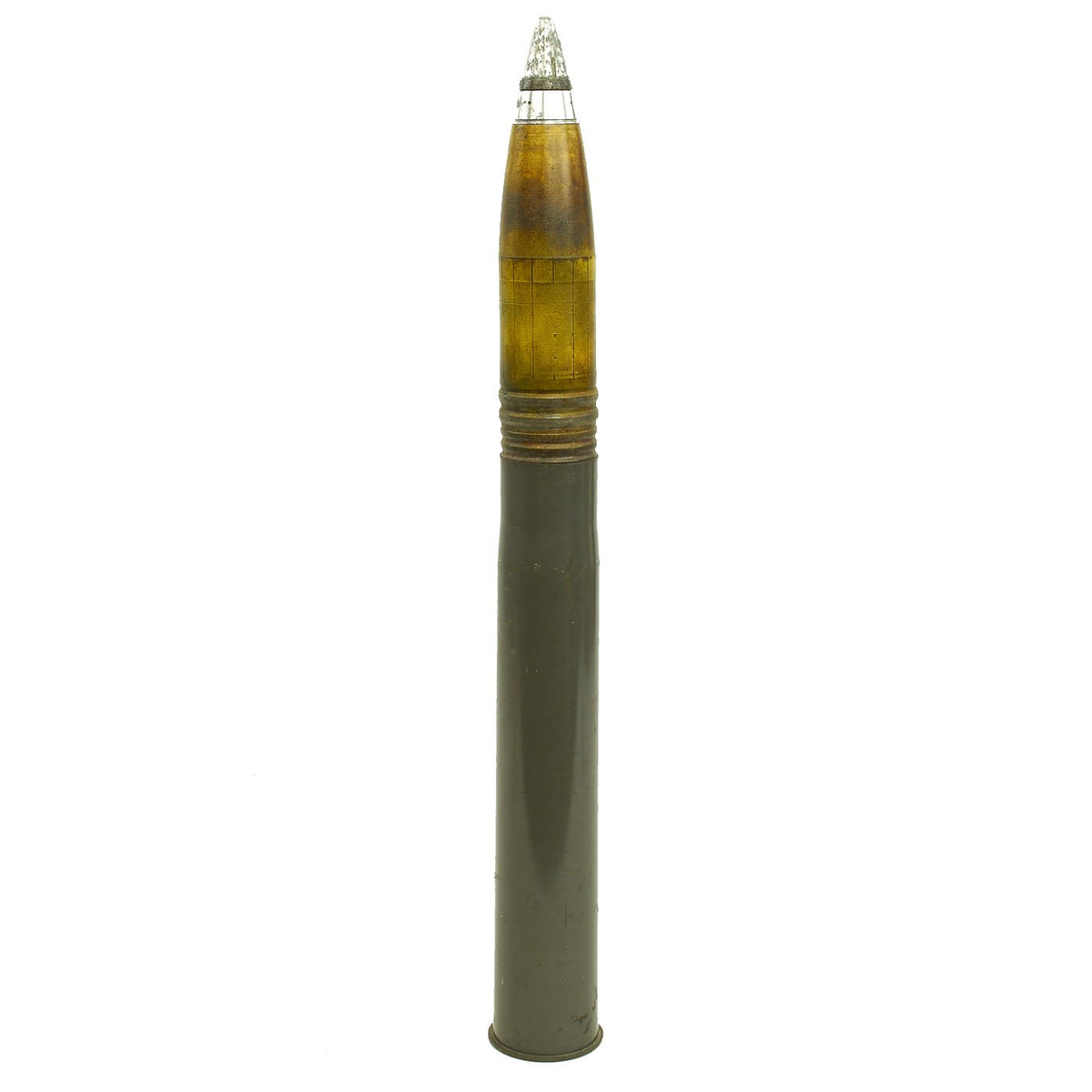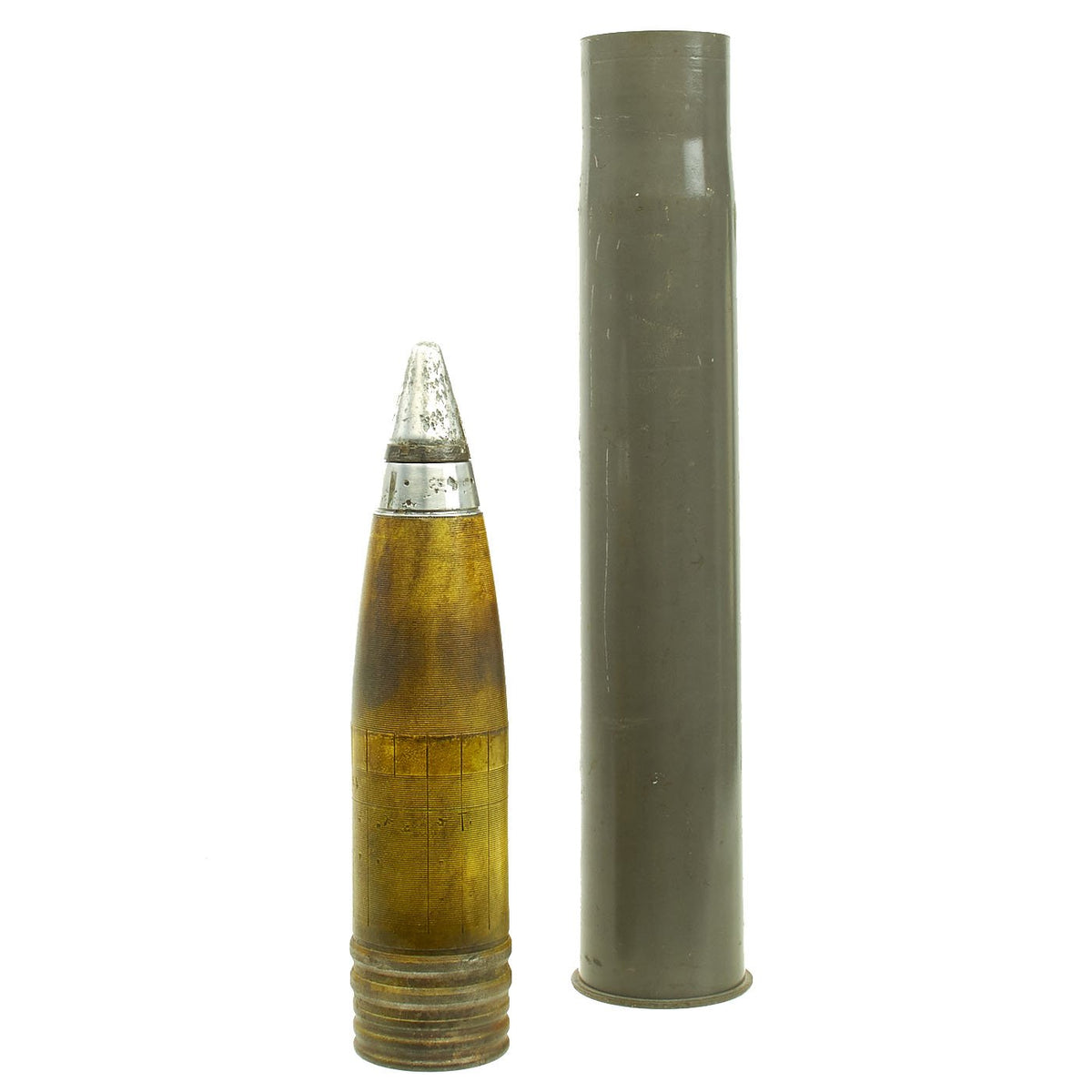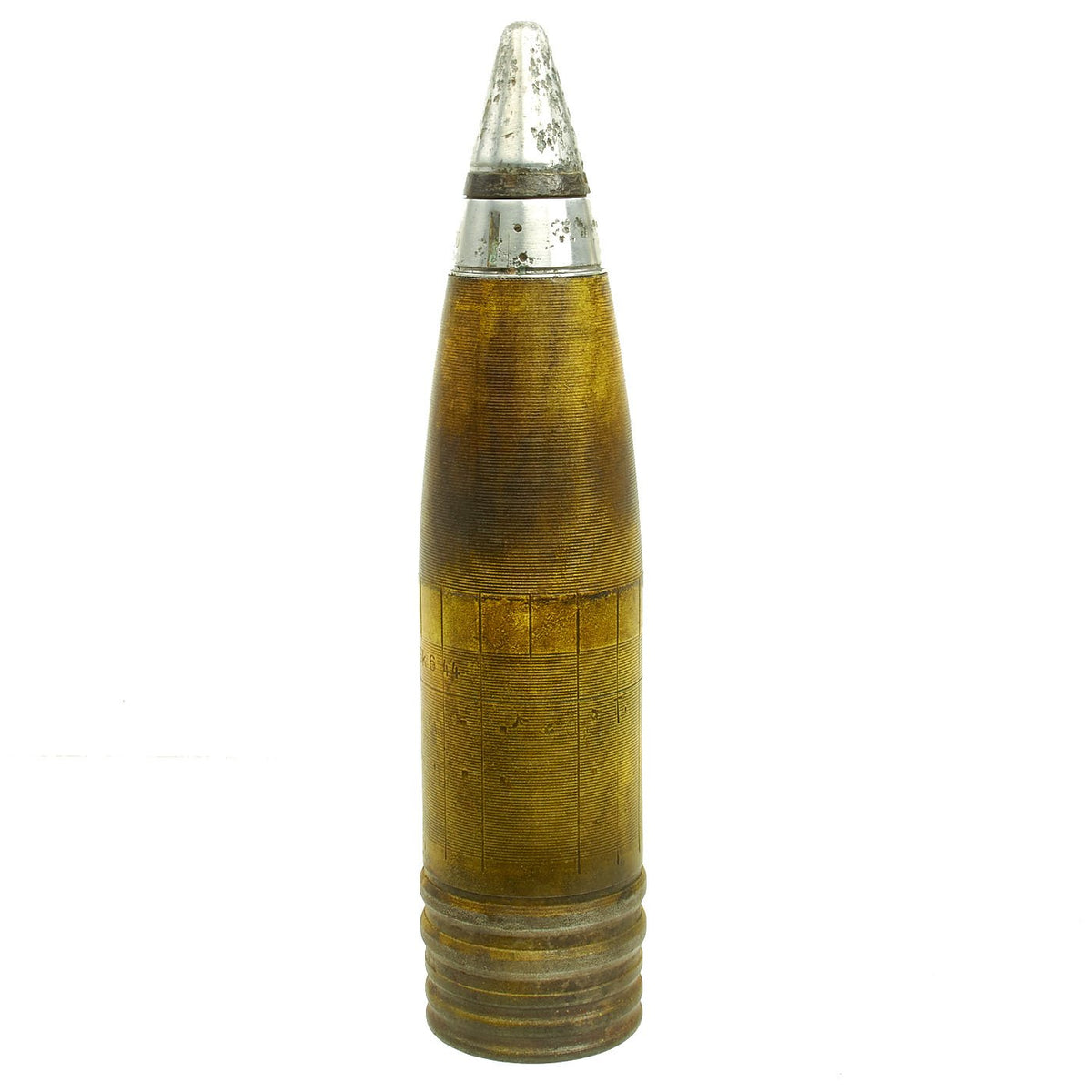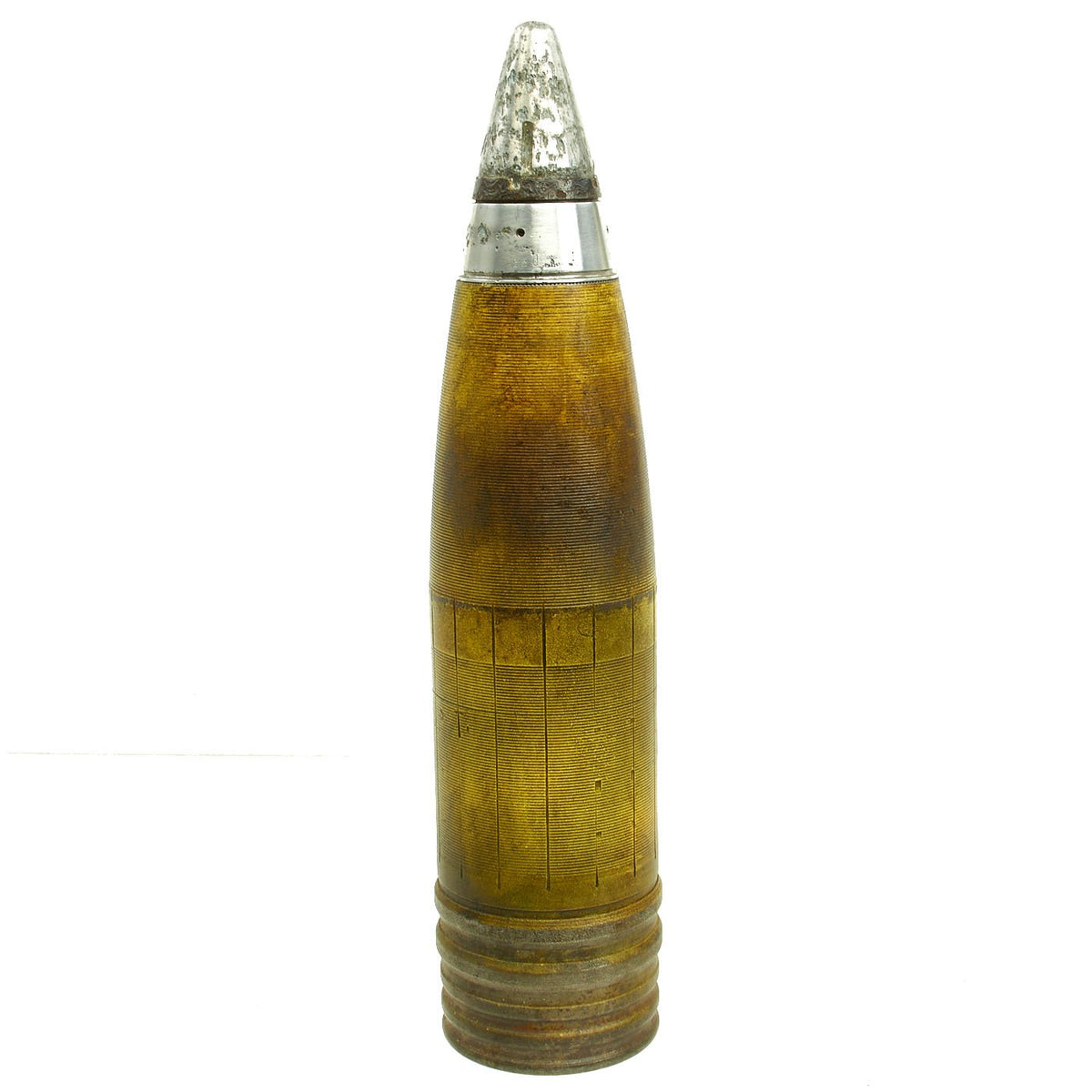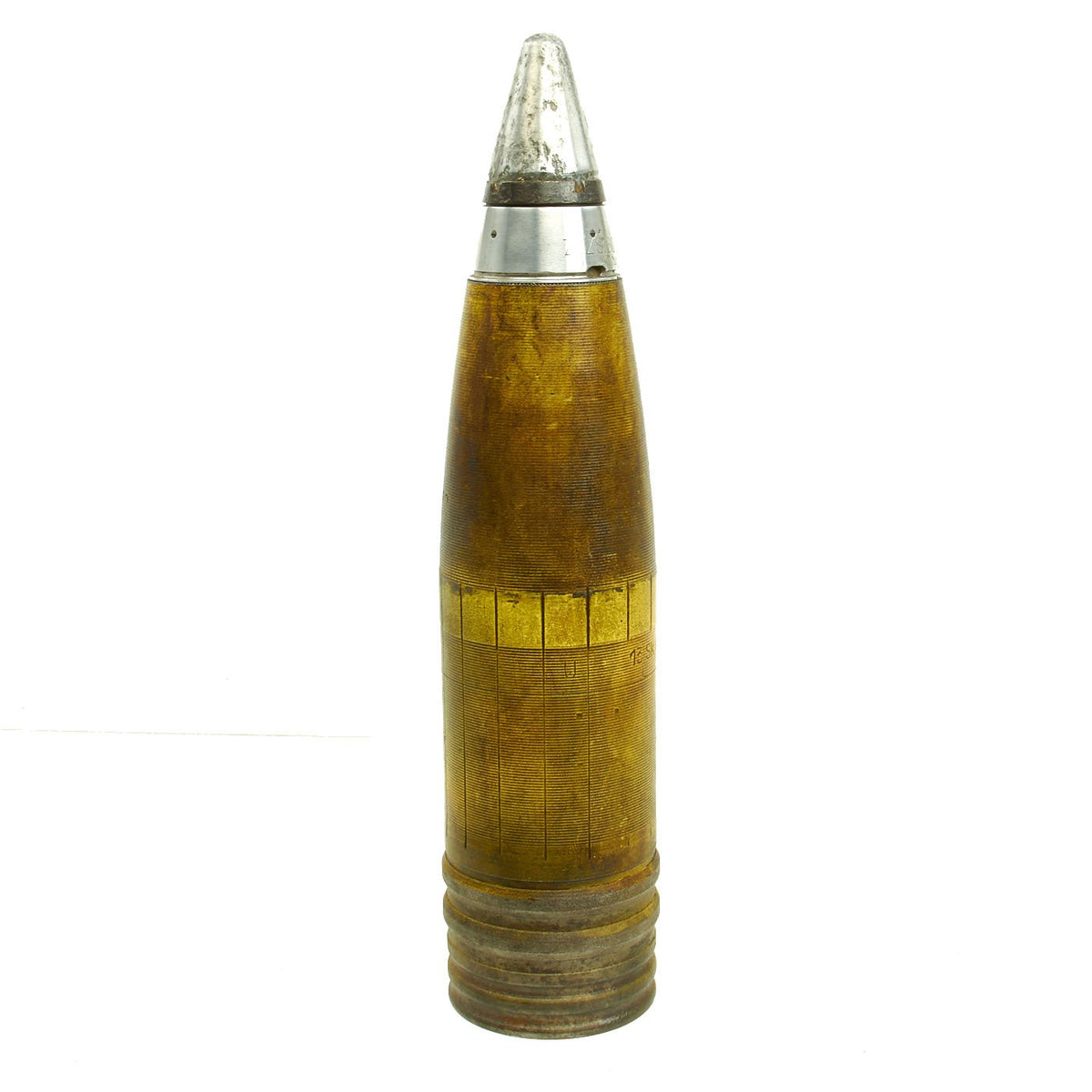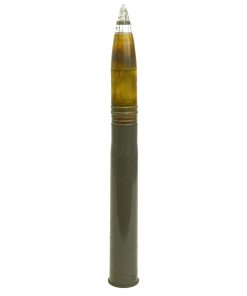Original German WWII FlaK 88 High Explosive Inert Shell with Steel Casing – WWII Marked & Dated Original Items
$ 2.195,00 $ 548,75
Original Item: Only One Available. This round is inert and follows guidelines provided by the ATF.
The 8.8 cm Flak 18/36/37/41 is a German 88 mm anti-aircraft and anti-tank artillery gun from World War II. It was widely used by Germany throughout the war, and was one of the most recognized German weapons of that conflict. Development of the original model led to a wide variety of guns.
The name FlaK 88 applies to a series of related guns, the first one officially called the 8.8 cm Flak 18, the improved 8.8 cm Flak 36, and later the 8.8 cm Flak 37. Flak is a contraction of German Flugzeugabwehrkanone meaning “aircraft-defense cannon”, the original purpose of the weapon. In English, “flak” became a generic term for ground anti-aircraft fire. In informal use, the guns were universally known as the Acht-acht (“eight-eight”) by Germans and the “eighty-eight” by the Allies.
The versatile carriage allowed the 8.8 cm FlaK to be fired in a limited anti-tank mode when still on its wheels; it could be completely emplaced in only two and a half minutes. Its successful use as an improvised anti-tank gun led to the development of a tank gun based upon it: the 8.8 cm KwK 36, with the “KwK” abbreviation standing for Kampfwagen-Kanone (literally “battle vehicle cannon”, or “fighting vehicle cannon”), meant to be placed in a gun turret as the tank’s primary armament. This gun served as the main armament of the Tiger I heavy tank.
In addition to these Krupp designs, Rheinmetall later created a more powerful anti-aircraft gun, the 8.8 cm Flak 41, which was produced in relatively small numbers. Krupp responded with another prototype of the long-barreled 8.8 cm gun, which was further developed into the anti-tank and tank destroyer 8.8 cm PaK 43 gun used for the Elefant and Jagdpanther, and turret-mounted 8.8 cm KwK 43 heavy tank gun of the Tiger II.
This example is offered in very good condition. It is marked in numerous places with German insertion stamps, manufacturer codes and technical designations. These The shell itself is marked 13 SK 6 44 and retains about 50% original yellow paint. The aluminum fuse is marked Zt ZS/30 along with WaffenAmt proofs and is dated 1940. The yellow paint and two rotating bands indicate that it is a High-Explosive round. The painted steel shell casing measures 22-1/2″ high and is marked on the base ck 42 and 88cm FLAK 16.
The fuze unscrews from the top of the shell, and the fuse nose also unscrews, allowing the internal detonator mechanism to be examined. There is some pitting and corrosion on the aluminum fuze housing, not uncommon for a 70 year old fuze.
Complete rounds such as these with original paint and intact markings are extremely rare. Ready to add to your collection and display!
Fast Shipping with Professional Packaging
Thanks to our longstanding association with UPS FedEx DHL, and other major international carriers, we are able to provide a range of shipping options. Our warehouse staff is expertly trained and will wrap your products according to our exact and precise specifications. Prior to shipping, your goods will be thoroughly examined and securely secured. We ship to thousands clients each day across multiple countries. This shows how we're dedicated to be the largest retailer on the internet. Warehouses and distribution centres can be located throughout Europe as well as the USA.
Note: Orders with more than one item will be assigned a processing date depending on the item.
Before shipping before shipping, we'll conduct a thorough inspection of the items you have ordered. Today, the majority of orders will be delivered within 48 hours. The delivery time will be between 3-7 days.
Returns
The stock is dynamic and we cannot completely manage it because multiple stakeholders are involved, including our factory and warehouse. So the actual stock may alter at any time. It's possible that you may not receive your order once the order has been made.
Our policy is valid for a period of 30 days. If you don't receive the product within 30 days, we are not able to issue a refund or an exchange.
You can only return an item if it is unused and in the same state as the day you received it. You must have the item in its original packaging.
Related products
Uncategorized
Uncategorized
Uncategorized
Uncategorized
Uncategorized
Uncategorized
Armoured Fighting Vehicles of the World: AFVs of World War One (Hardcover Book) New Made Items
Uncategorized
Australian WWII Owen MK1 Machine Carbine SMG Custom Fabricated Replica with Sling Original Items
Uncategorized
Uncategorized
Uncategorized
Uncategorized
Uncategorized
Band of Brothers ORIGINAL GERMAN WWII Le. F.H. 18 10.5cm ARTILLERY PIECE Original Items
Uncategorized
Angolan Rebel 1970s era 60mm Inert Display Mortar from Angolan Civil War Original Items
Uncategorized
Uncategorized
Uncategorized
Uncategorized
Uncategorized
Armored Burgonet Helmet & Polearm from Scottish Castle Leith Hall Circa 1700 Original Items
